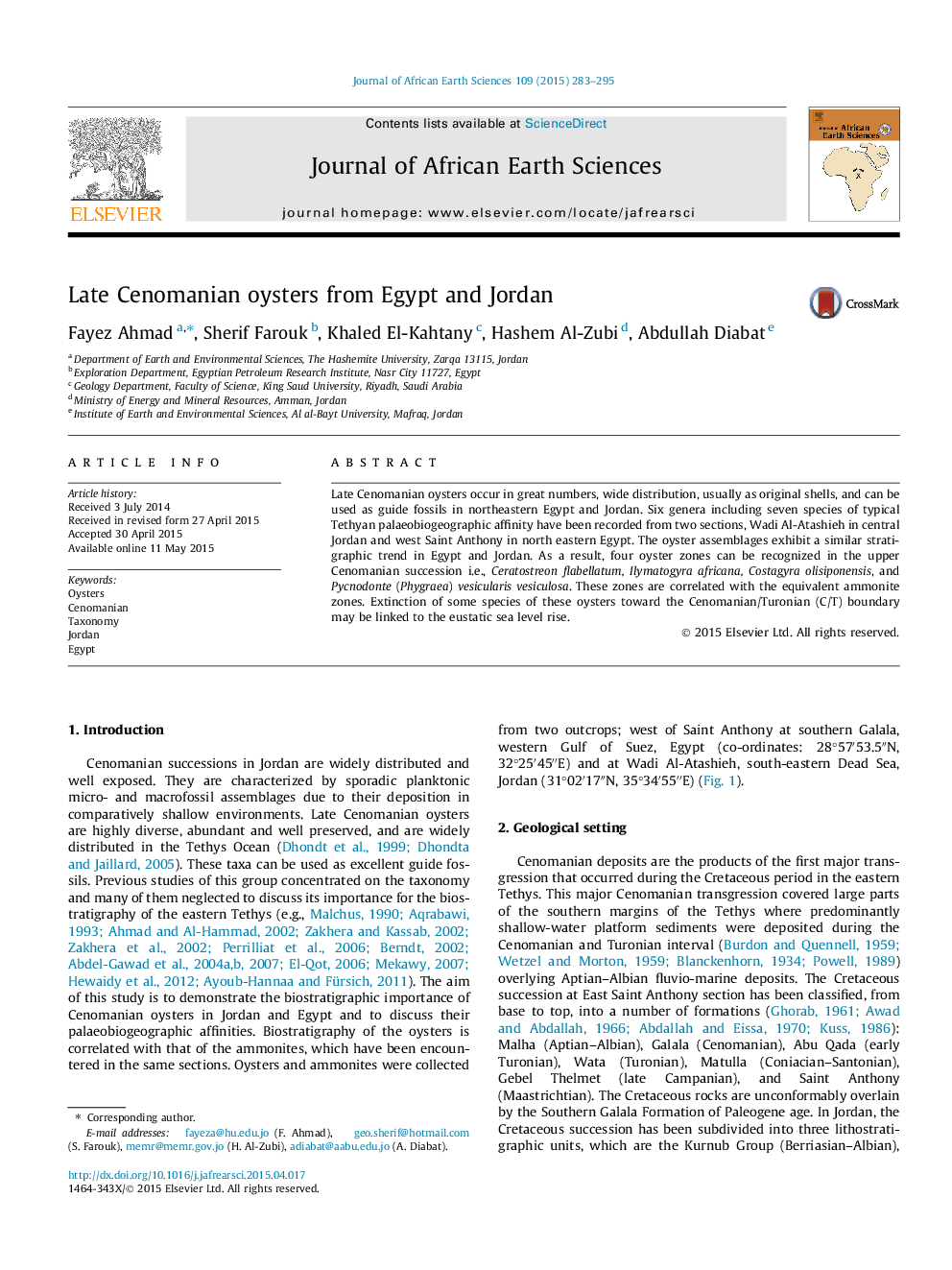| Article ID | Journal | Published Year | Pages | File Type |
|---|---|---|---|---|
| 4728651 | Journal of African Earth Sciences | 2015 | 13 Pages |
•Seven Late Cenomanian oysters are recorded from Egypt and Jordan.•The oyster assemblages exhibit a similar stratigraphic trend in Egypt and Jordan.•Four oyster zones can be recognized.•These zones are correlated with the equivalent ammonite zones.•The recorded oyster assemblages of typical Tethyan palaeobiogeographic affinity.
Late Cenomanian oysters occur in great numbers, wide distribution, usually as original shells, and can be used as guide fossils in northeastern Egypt and Jordan. Six genera including seven species of typical Tethyan palaeobiogeographic affinity have been recorded from two sections, Wadi Al-Atashieh in central Jordan and west Saint Anthony in north eastern Egypt. The oyster assemblages exhibit a similar stratigraphic trend in Egypt and Jordan. As a result, four oyster zones can be recognized in the upper Cenomanian succession i.e., Ceratostreon flabellatum, Ilymatogyra africana, Costagyra olisiponensis, and Pycnodonte (Phygraea) vesicularis vesiculosa. These zones are correlated with the equivalent ammonite zones. Extinction of some species of these oysters toward the Cenomanian/Turonian (C/T) boundary may be linked to the eustatic sea level rise.
